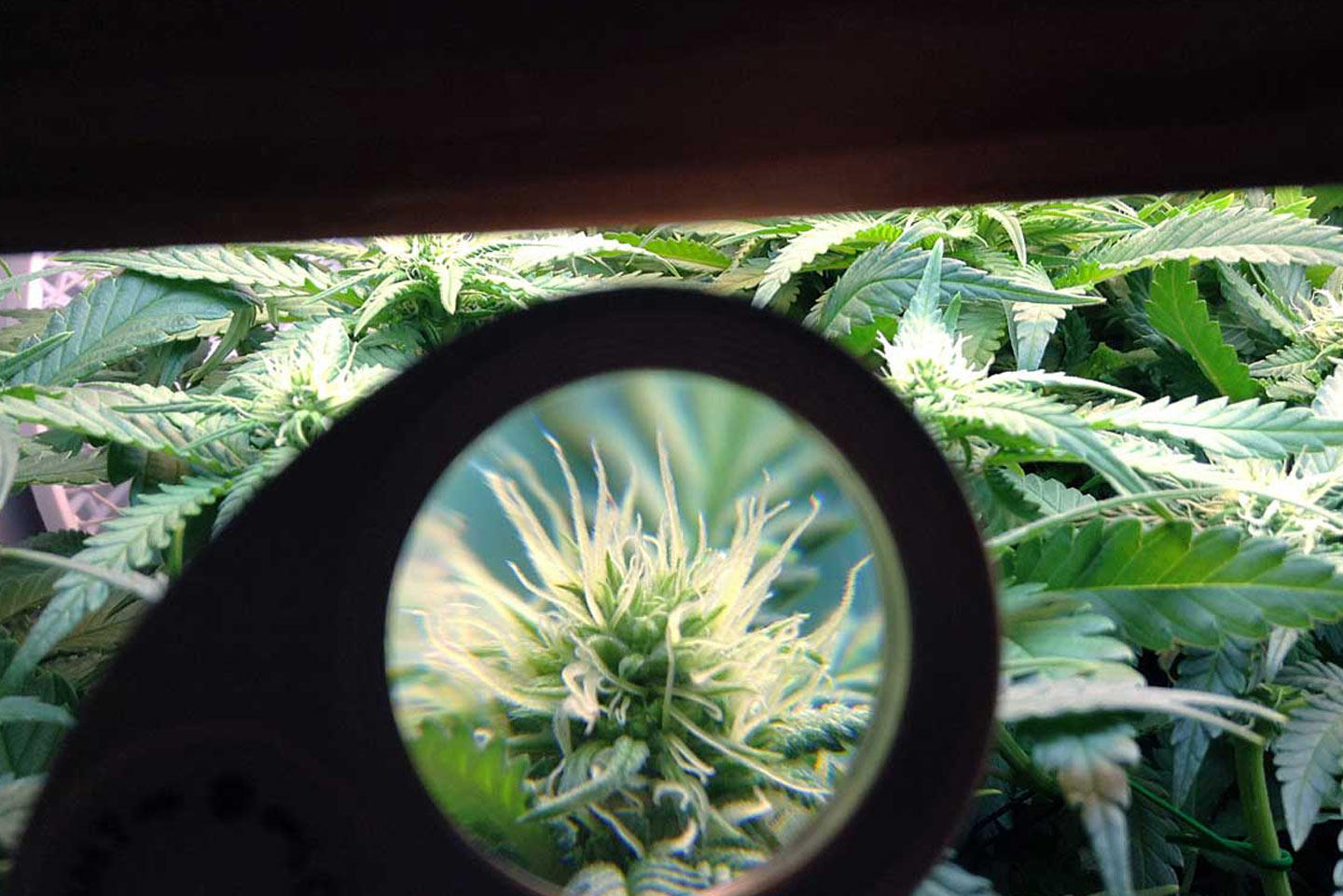Harvesting is combining art and science. Jermaine doesn’t rely on just one method to know when his ladies are ready.
“I use a jeweler’s loop, but many old-timers can just look at it and feel it. You don’t have to have one, but it’s good if you are interested in seeing the transition.”
In addition to the loop and the hardness of the buds, he also makes sure to look for weather conditions such as hail, rain and temperatures. Immediate drops in temperature can really devastate gardens, and Jermaine is next to his ladies enough to know when they can’t aren’t able to handle the stress.
“I’ve tried to take plants out in the rain before,” he reminisced, however he added that he was not caught by surprise. “The plant always knows when it’s on its way out, you just have to recognize the signs.”
A good mixture of plants saved Jermaine’s garden from disaster this year. Rather than growing the same type of plants, he intelligently chose to cultivate both indica dominant and sativa dominant strains. He also made sure to grow from seed and clones.
Unfortunately his clones were not prepared for the early frost. As a result, those plants had to be taken down earlier than planned, missing out on their ability to be further harvested for B and C cuts. It was a huge loss of profit, but it could have been a lot worse, had they all been clones.
Through it all, Jermaine stayed calm and focused, harvesting the hardest buds first and letting the lost buds go.
“The hardest buds will dry the fastest. Get them in and get them out. You’re going to need that space to harvest other plants.“
Is The Stickiness as Bad as they Say

